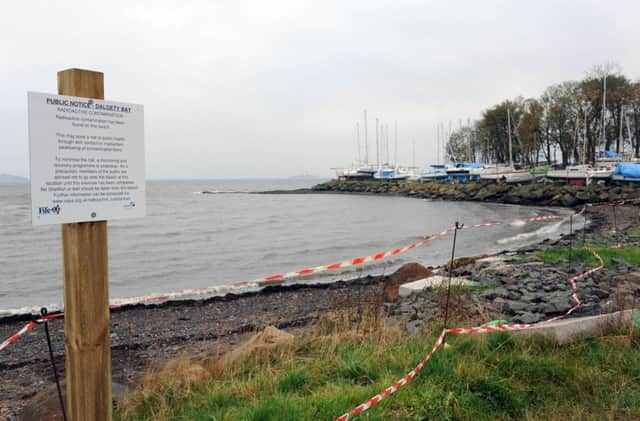MoD will clean up radiation at Dalgety Bay beach


Some 3,500 radioactive particles have been found at Dalgety Bay over the past two decades.
The material is thought to date back to when parts of Second World War aircraft, including their radiated instruments, were dumped at the site.
Advertisement
Hide AdAdvertisement
Hide AdDefence chiefs have now confirmed that work will include removing the particles from the beach, and building a wall and slipway to prevent other radioactive material from reaching the area.
It should start later this year and will continue in phases until 2018.
A report on the work does not specify costs but local MP and former prime minister Gordon Brown believes the clean-up total will be around £10m.
“After three years of intensive campaigning, including four debates in the House of Commons, I welcome the Ministry of Defence agreement to spend what I believe will be £10m to clean up the pollution caused by radiation at Dalgety Bay,” he said.
“The pollution resulted from dumping 800 wartime planes with radiated dials and other hazardous equipment into the sea. Subsequent coastal erosion has brought the pollution to the surface.”
He added: “I am satisfied that the Ministry of Defence is going to fund the clean-up costs. At the same time, I want an accelerated timetable so we don’t have to wait another four years before the pollution is removed and we are satisfied that the risks have been dealt with.”
The Scottish Environment Protection Agency (Sepa) also welcomed the report. Calum MacDonald, its executive director, said: “The proposed works outlined by the MoD provide a long-term solution to the radium contamination of Dalgety Bay which, if successful, will allow the public to use the entire area again in an unrestricted manner.”
Radiation was first discovered at the site in 1990.
Part of the foreshore was closed in October 2011 after a piece of contaminated metal was discovered on the beach.
Advertisement
Hide AdAdvertisement
Hide AdSince then, studies have been carried out by Sepa and the MoD, who have been deemed responsible for the radiation.
Erosion along the coastline is responsible for radioactive material moving to the surface. The coastal wall and a larger concrete slipway will be built to prevent this.
Colin McPhail, chairman of the local community council, said: “I have stood on this beach before, moaning and groaning, but now there’s good news, certainly. Now, finally we have got a resolution to a problem that started in 1990 when the radiation was first found.”
Dr Richard Dixon, director of Friends of the Earth Scotland, said it was not a “complete solution” but praised the local community for their campaigning.
He said: “Some radioactive waste will be left entombed on site but it should finally put an end to the danger faced by humans and wildlife in what should be one of Scotland’s more attractive seaside spots.
“All credit to the community and to Sepa for their dogged persistence in getting the MoD to finally do the right thing.”
SNP MSP Annabelle Ewing said: “Residents of Dalgety Bay and Fifers from across the Kingdom have been waiting decades for this mess to be cleaned up, so I am glad that some progress has been made on this issue and that the MoD has finally accepted responsibility.”